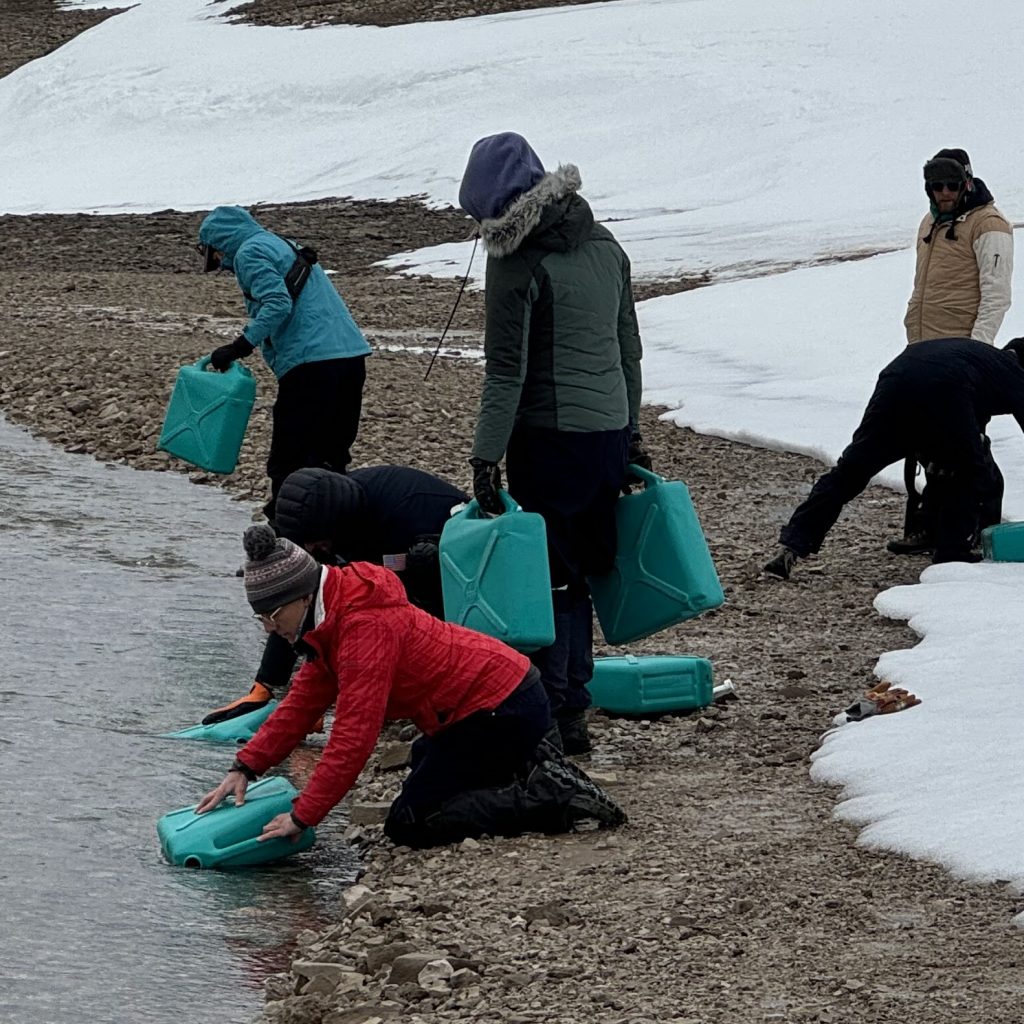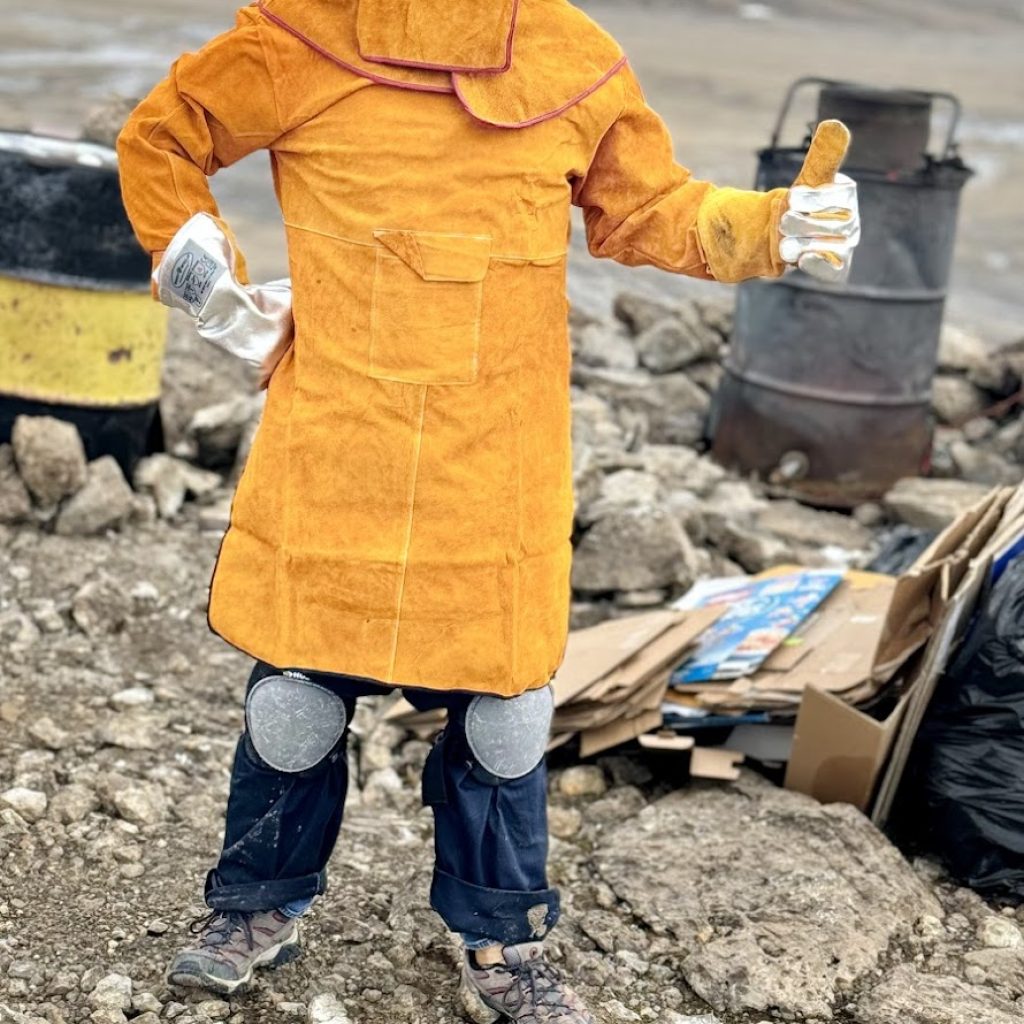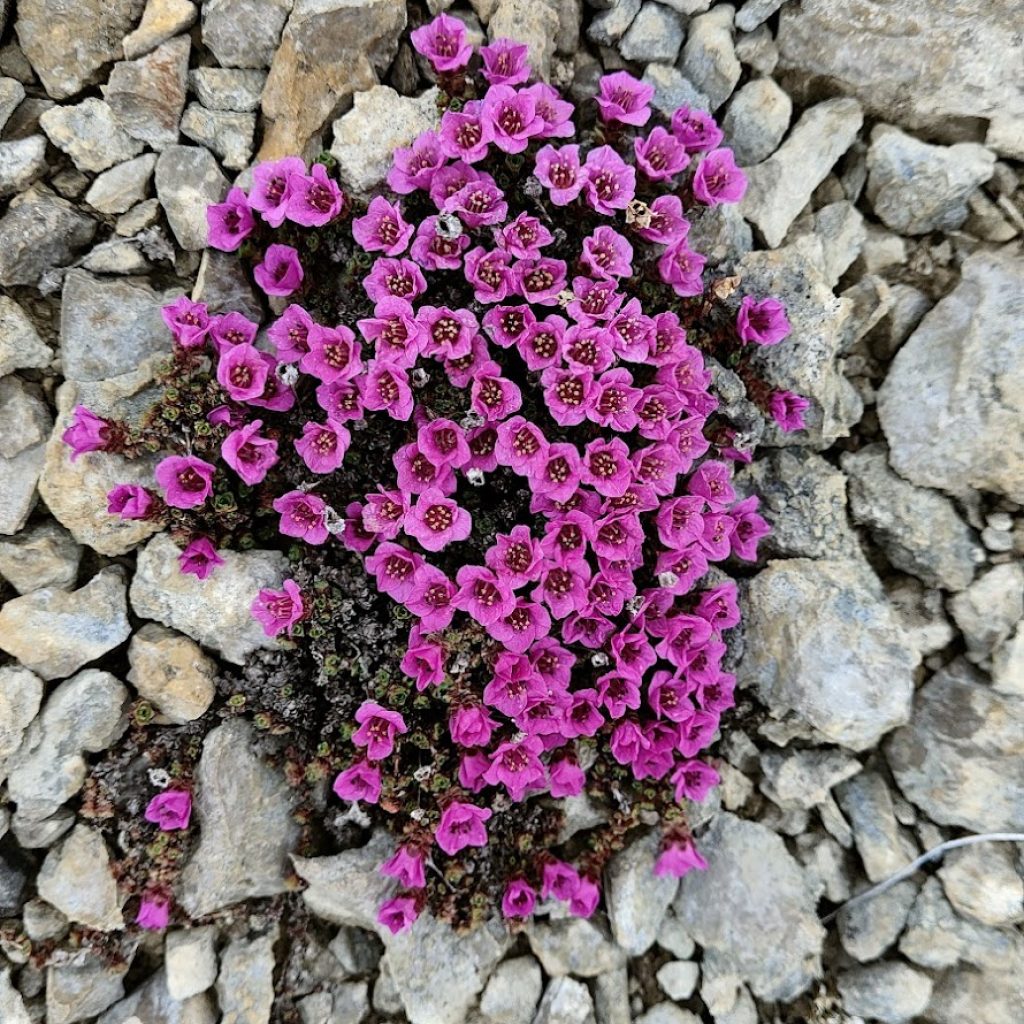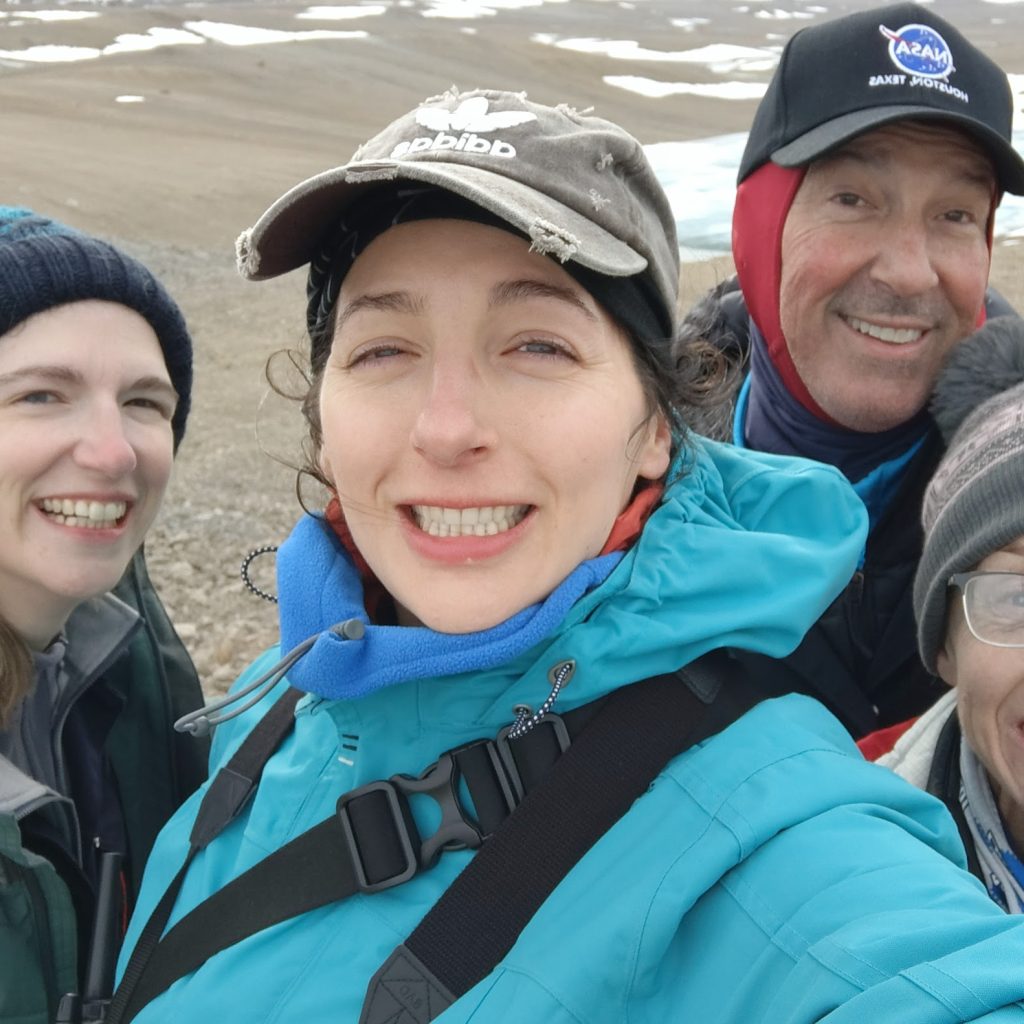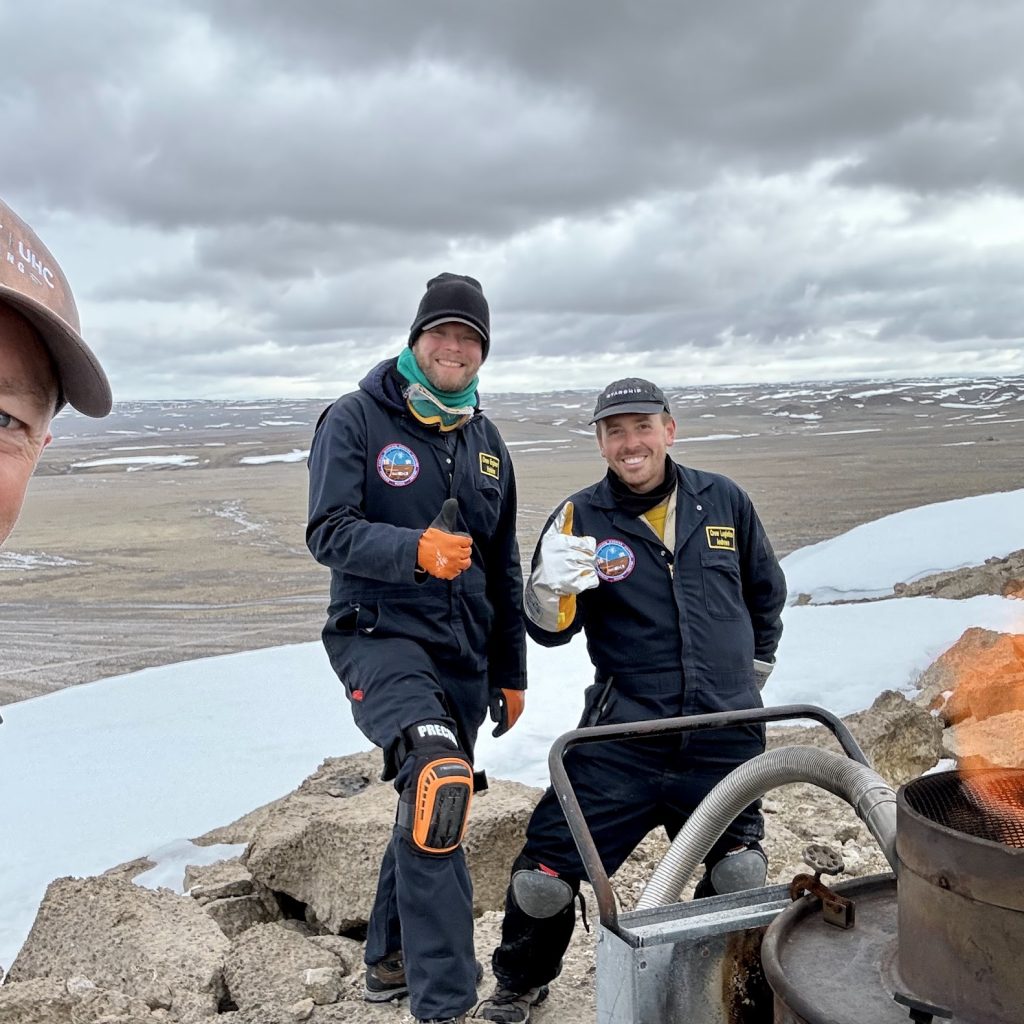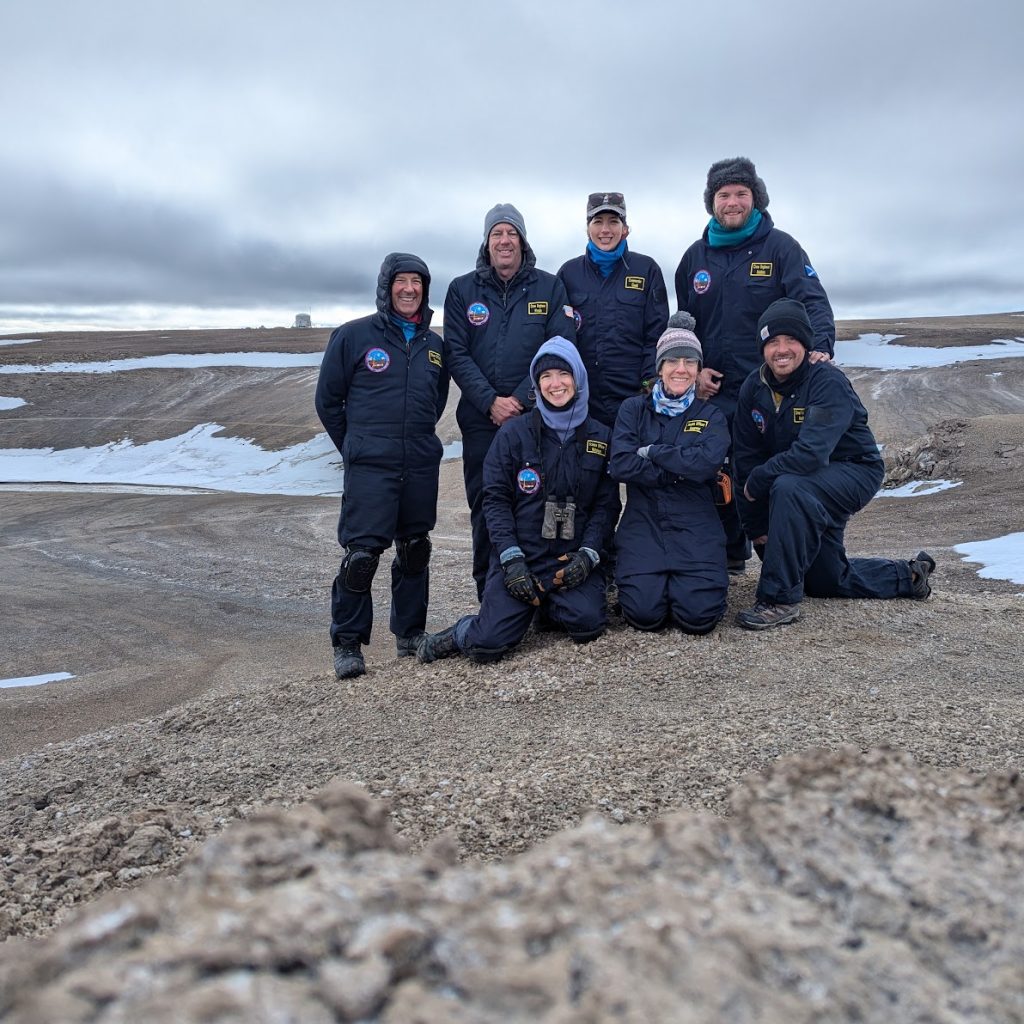Flashline-16 Daily Report 04-07-2024
Author: Michael Andrews – Crew Logistics
Happy 4th of July! The Arctic Wolves crew woke up after a much warmer and sounder sleep than our first night, and started the day with a team breakfast. We had a few high-level objectives for our second pre-simulation day:
- Hike to gather enough water for the entirety of our simulation
- Restore power to as many ATVs as possible – minimum two, ideally at least three
- Incinerate trash from previous mission and this mission to date
- Collect lake water samples on an expedition
Our first goal for the day was to gather as much water as possible, to prevent it from being a recurring daily task during simulation. We gathered a total of 48 gallons of water, and turned it into a mini expedition where we explored the surrounding area and gathered some interesting rocks to inspect and 3D image later at the research station.
After a lunch of rice, tuna, and corned beef, we modified our ECHO messaging app to update our message delay to match current distance between Mars and Earth. With these two heavenly bodies being more 257 million kilometers apart, messages traveling at the speed of light take 14.5 minutes to make a one-way trip. The ECHO application that we use takes this into consideration, allowing instantaneous messages between Mission Support members, but prepares us for the real-world challenges of an off-world station. I wanted to kick this feature off a day early so we can get used to delayed comms with MS this evening.
For the rest of the afternoon, we split up into two teams in order to divide and conquer our objectives:
- Science team: Commander Ilaria Cinelli, Chief Science Officer Nicholson, Executive Officer Terry Trevino, and Health and Safety Officer Swarmer
- Engineering team: Crew Engineer Mason Robbins, Mission Specialist Rhett Woods, and myself.
The science team set out to gather water and algae samples from a trinity of lakes – creatively known as Lakes A, B, and C. They kept in touch with the engineering team via radio for the majority of the hike, but we learned that the battery life and temperature of the environment will require us to carry two (or even three) radios to turn on sequentially as they run out of charge. The science crew also got familiar with some of the more difficult terrain on the island, which was helpful feedback to the engineering team for future EVAs. Some of the ground can be extremely muddy and make it hard to traverse, but we also don’t to disturb the environment. Much like the Moon, a deep footprint in such an undisturbed and austere environment could last for a century!
The samples that were recovered will be discussed further in Officer Nicholson’s report.
As for the engineering team, we had several more serious tasks at base than we dealt with yesterday. Our old generator (known as Gen A or “Jenny”) unexpectedly seized up, but a quick oil change turned out to be a quick fix. Next, we addressed our ATV fleet. One ATV worked, one worked but had a flat tire, and another worked on our first day on Devon Island but now would not turnover on ignition. The remaining two ATVs had a similar turnover issue but had not successfully worked on this mission. We need at least two for simulation EVAs to be successful, so we cannibalized good tires from inoperable ATVs and put them on the only ATV that would start. We will have to do more research on the remaining 3 ATVs’ issues before working on them further.
The final engineering task was to fire up our incinerator for a little Independence Day grillout of our waste and trash. All non-hazardous, non-metal, and non-glass waste is incinerated to reduce our site footprint and reduce weight on the return flight to Resolute Bay. We upgraded our personal protective equipment (PPE) from last year, and it allowed us to operate the unit much more safely. In about an hour, we were able to incinerate all trash from this mission and any leftover waste from last year’s mission.
The team finished off the day with Commander Cinelli’s secret pasta recipe and a movie projected onto the interior wall of the hab. Tomorrow’s operations are contingent on weather. If the forecast is favorable, we will hike to the base of Haughton Crater as a team; otherwise, we will work on some organization and interior tasking before starting simulation. We also need to determine the rules of simulation in the upcoming day so the team is aligned on the rules and roles.
Some more parting thoughts from the team before I close out this report. We initially came here to explore, perform research, and improve the habitat. But it’s apparent that it’s important to spend adequate time on station maintenance and down time. Neither is flashy or exciting, but keeping the station, our bodies, and our minds sharp is essential to being a successful team!
